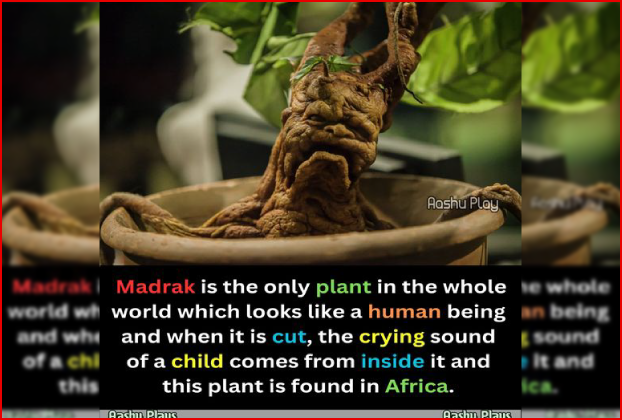
Subscribe to our WhatsApp Channel
In the realm of botanical myths, few are as intriguing as the belief that mandrake plants cry when uprooted. This article dives into the heart of this claim, exploring whether there’s any truth to the idea that these plants emit cries of distress. Through a blend of historical exploration and scientific investigation, we aim to unravel the mystery behind this age-old tale.
Social Media Posts :
Mandrake plants, when uprooted, emit a fatal crying sound. This belief has been widely circulated on social media, with many posts suggesting that the uprooting of a Mandrake or Mandragora plant results in it producing lethal cries
We have taken steps to investigate the facts to find out the accuracy of the facts shown in the above post.
Fact – Check:
The claim that mandrake plants cry upon being uprooted is a myth rooted in ancient folklore and mythology.
Historical and Folkloric Origins
Ancient Beliefs:
- The myth of the crying mandrake dates back to ancient times. In ancient Roman literature, Pliny the Elder described the dangerous properties of the mandrake in his work “Natural History.” Similarly, the Jewish historian Josephus mentioned the deadly screams of the mandrake.
- Medieval European folklore further entrenched this belief, often describing the mandrake as having a human-like root that would emit a fatal scream when pulled from the ground. This idea led to elaborate rituals to safely harvest the plant, such as tying the root to a dog to pull it out while the person harvesting stayed at a distance to avoid hearing the deadly cry.
Cultural References:
- Shakespeare referenced the myth in “Romeo and Juliet,” where Juliet fears the screams of the mandrake.
- The myth persists in modern popular culture, most notably in the “Harry Potter” series, where mandrakes are depicted as having a scream that can knock out or even kill people.
Scientific Perspective
Botanical Facts:
- Mandrake plants belong to the genus Mandragora. They are real plants with roots that can resemble human figures, contributing to their mystical reputation.
- However, plants do not have vocal cords or any mechanism to produce sounds. The concept of a plant emitting a scream is purely a creation of human imagination.
Chemical Properties:
- Mandrakes contain alkaloids such as hyoscyamine and scopolamine, which can cause hallucinations and altered mental states. These psychoactive properties may have contributed to the plant’s mystical and eerie reputation, with those under its influence possibly imagining supernatural events.
Modern Expert Insights
Academic Commentary: Chris Thorogood, from the University of Oxford Botanic Garden and Harcourt Arboretum, provides a detailed explanation debunking the myth. In a video found during our research, Thorogood clarifies that while the mandrake plant is fascinating and has interesting botanical characteristics, it does not cry or produce any sound when uprooted.
Follow us and stay up to date with our latest fact checks
Facebook | Twitter | Instagram | Google News | TikTok | WhatsApp
Conclusion :
The claim that mandrake plants cry upon being uprooted is a myth with deep historical roots in folklore and mythology. Scientifically, mandrake plants lack the ability to produce sound. This myth has been perpetuated through centuries of storytelling and continues to be a fascinating part of popular culture. Notably, the portrayal of mandrakes in the “Harry Potter” series, where they are depicted as having a lethal scream, further solidifies their mythical status in modern media. However, in reality, mandrake plants do not emit any cries when uprooted. This claim remains debunked, underscoring the importance of critical thinking and scientific inquiry in evaluating folklore and popular beliefs.







